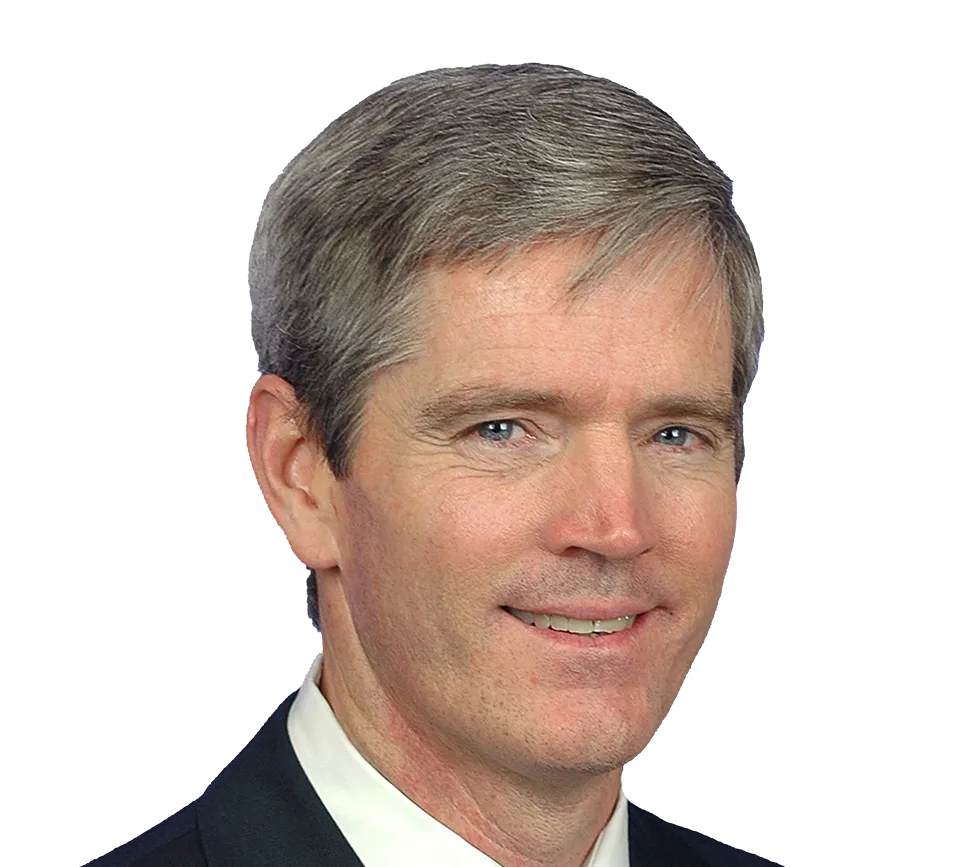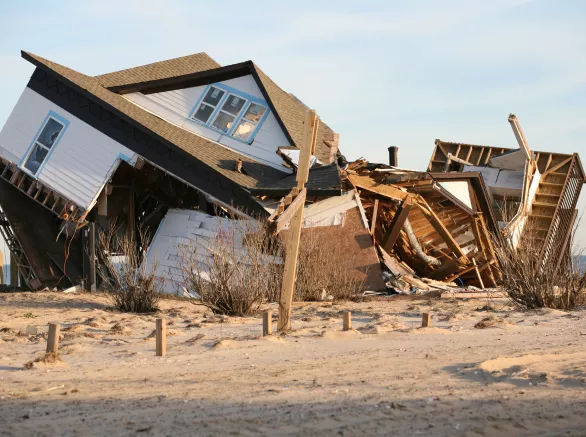Ghahremani, K., Bailey, JR, and Amoroso, SD. Hurricane Damage to Residential Structures: Wind Damage Overview. 10th Forensic Engineering Congress, Seattle, WA. November 1-4, 2024.
Peraza, DB, and Bailey, JR. Analysis of Floodwater Entry to Corporate Campus, 10th Forensic Engineering Congress, Seattle, WA. November 1-4, 2024.
Investigation of component failures at a solar farm located in West Texas following a convective storm event. Report prepared for developer and operator of facility. December 2022.
Bailey, JR. Investigation of component failures at a solar farm located in South Texas following Hurricane Hanna. Report prepared for developer and operator of facility. April 2021.
Bailey, JR. Investigation of a turbine collapse at a wind farm located in West Texas. Report prepared for a major U.S.-based property loss insurer. March 2021.
Bailey, JR. Investigation of component failures at several properties owned by Linn County, Iowa, following the August 2020 Midwest Derecho. Report prepared for a major U.S.-based property loss insurer. December 2020.
Bailey JR, et al. Wind loads for petrochemical and other industrial facilities. American Society of Civil Engineers, 3rd Edition. September 2019.
Bailey, JR. Hurricane risk assessments of wind farms located in Southeast Texas operated by EoN Climate and Renewable. Reports prepared for a major U.S.-based property loss control provider. April 2019.
Bailey, JR. Investigation of Ingress/Egress Issues following Hurricane Harvey. Report prepared for a major hospital system located in the Houston Metropolitan area. September 2018.
Bailey, JR. Investigation of failures in a sanitary sewer system owned by a casino operator in Louisiana. Report prepared for the construction contractor of the development. May 2018.
Bailey, JR. Tornado risk assessments of two electrical power plants located in Indiana operated by NiSource, Reports prepared for a major U.S.-based property loss control provider. August 2017.
Bailey, JR. Risk-based design for critical facilities. Power Market Review 2016. Willis Towers Watson. November 2016.
Bailey, JR. Analysis of Solar Tracker Foundation. OCI Solar Power LLC. September 2016.
Bailey, JR. Amoroso, S. et al. A Proposed Methodology for Estimating Wind Damage to Residential Slab-Only Claims Resulting from a Hurricane Impacting the Texas Coastline, presented to David Mattax, Commissioner, Texas Department of Insurance, by TDI Expert Panel. April 2016.
Bailey JR, Shrestha PL, et al. Analysis of maximum probable storm surge at the South Texas Project site. Proceedings, ASCE EWRI Conference, Seattle, WA. June 2014.
Bailey, JR. Hurricane risk assessment of a planned carbon capture facility located in Southeast Texas operated by NRG Energy, Inc., Report prepared for a California-based risk management company. February 2014.
Bailey, JR. Hurricane risk assessments of five electrical power plants located in the Caribbean and Hawaii operated by the AES Corporation, Report prepared for a California-based risk management company. November 2012.
Bailey JR. Feasibility study of an Alaskan LNG plant. Report prepared for an Asian-based consortium of companies. March 2012.
Bailey JR, et al. Wind loads for petrochemical and other industrial facilities. American Society of Civil Engineers, 2nd Edition. September 2011.
Bailey, JR. Hurricane risk assessment of two wind farms located in South Texas operated by EoN Climate and Renewable. Report prepared for a California-based risk management company. June 2011.
Bailey JR. Wind risk assessment of the ThyssenKrupp steel plant located in Mississippi. Report prepared for a California-based risk management company. November 2010.
Bailey JR, Cantor R, et al. An approach to business vulnerability and risk assessments related to climate change. SPE International Conference on Health, Safety & Environment, Rio de Janeiro, Brazil. April 2010.
Bailey JR. A hurricane risk assessment and mitigation plan for CHRISTUS hospitals located in Texas and Louisiana. Report prepared for CHRISTUS Health. July 2009.
Bailey JR. Study of Major Revenue Interruption Risks in the Gulf of Mexico. Report prepared for a major oil and gas operator headquartered in the United States. July 2009.
Bailey JR, Gilbert RT, et al. Wind load considerations for existing petrochemical structures. Structures Congress, American Society of Civil Engineers (ASCE), Austin, TX. May 2009.
Bailey JR, Levitan ML. Lessons learned and mitigation options for hurricanes. Process Safety Progress, American Institute of Chemical Engineers (AIChE). 2008.
Bailey JR. Finding the breaking point. Report documenting window performance following the 2004 Florida hurricanes. Prepared in conjunction with the Protecting People First Foundation, Wickford, RI. April 2005.
Bailey JR. Flood hazard assessment of critical NASA assets at the Johnson Space Center. Report prepared for NASA management by ABS Consulting. July 2004.
Bailey JR, Johnson G. Learning from experience - a Risk-based approach to assess windstorm exposures at the Kennedy Space Center. Global Reinsurance. April 2001.
Bailey JR. Wind hazard assessment of critical NASA assets at the Johnson Space Center. Report prepared for NASA management by ABS Consulting. February 2001.
Bailey JR. Vulnerability assessment of Harris County to hurricane winds. Report prepared for the Harris County Commissioners Court by EQE International. June 2000.
Bailey JR. Wind and flood hazard assessment of Critical NASA assets at the Kennedy Space Center. Report prepared for NASA management by EQE International. June 2000.
Bailey JR, Vallabahn CVG, et al. Experimental verification of the theoretical solution of laminated glass units. Proceedings, Advanced Composites Materials in Civil Engineering Structures Materials Division, American Society of Civil Engineers, Las Vegas, NV. 1991 (paper awarded Best of Session, Spring 1991, by the Texas Section of the American Society of Civil Engineers).
Bailey JR, Minor JE, Tock RW. Changes in Seal Shapes of Structurally Glazed Insulating Glass Units, ASTM STP 1069, T. F. O'Connor, ed., ASTM, Philadelphia, PA. 1990. pp. 42-52.
Bailey JR, Minor JE. Structural glazing tests show wind pressure effects. Glass Digest. Oct 1989.
Bailey JR, Minor JE, Tock RW. Response of structurally glazed insulating glass units to wind pressures, Proceedings, 6th U.S. Conference on Wind Engineering, Houston, TX. March 8-10, 1989.
Bailey JR, McDonald JR. Impact Resistance of masonry walls to tornado-generated missiles. Proceedings, 3rd North American Masonry Conference, Arlington, TX. June 3-5, 1985.
Presentations
Bailey JR and Peraza DB, Engineering Investigations of Hurricane Damage: Wind Versus Water, virtual presentation to the Houston Chapter of the Structural Engineering Association of Texas (SEAoT). February 25, 2021.
Bailey JR et al. Update on ASCE Guidelines, 'Wind Loads for Petrochemical and other Industrial Structures', Third Edition, Structures Congress 2018, Session 332575, Ft. Worth, TX. April 20, 2018.
Bailey JR, Shrestha PL, et al. Analysis of maximum probable storm surge at the South Texas Project site. ASCE EWRI Conference, Seattle, WA. June 2014.
Bailey JR. Presentation of evidence — How to keep the jury interested. Cooper & Scully 8th Annual Construction Symposium, Dallas, TX. February 1, 2013.
Bailey JR. Winds and rain a-comin — Hurricanes, structures and potential risks. Texas Association of Defense Council, Spring Meeting, Santa Fe, NM. April 27, 2012.
Bailey JR. Preparing for the worst — Is the nation prepared for natural disasters? American Bar Association Tort Trial & Insurance Practice Section Spring Leadership Meeting, Charleston, SC. May 17, 2012.
Bailey JR. Probable maximum surge and seiche flooding at a coastal nuclear power plant located in the United States, Advisory Committee on Reactor Safeguards (ACRS), Nuclear Regulatory Commission, Rockville, MD. November 30, 2010.
Bailey JR, Griffith M. Natural hazard risk assessment and mitigation for nuclear facilities. WebEx presentation. March 2, 2010.
Bailey JR. Lessons learned and mitigation options for hurricanes. Spring National Meeting, American Institute of Chemical Engineers (AIChE). April 2008.
Bailey JR. Vulnerability of industrial facilities. Reinsurance Association of America Cat Modeling 2006 Conference, Tampa, FL. February 23, 2006.
Bailey JR. Safe haven considerations at industrial sites. The Private Industry Workshop, National Hurricane Conference, New Orleans, LA. March 22, 2005.
Bailey JR. Finding the breaking point. International Code Council, Tampa, FL. February 12, 2005.
Bailey JR. Identifying protective areas for people in buildings. International Conference on Wind Engineering, Texas Tech University. June 2, 2003.
Bailey JR. Assessment of extreme wind effects on industrial facilities. The Private Industry Workshop, National Hurricane Conference, New Orleans, LA. April 17, 2003.
Bailey JR. Assessing the impacts of hurricanes and earthquakes. Association for Facilities Engineering Conference, Las Vegas, NV. September 25, 2001.
Bailey JR. Using Digital PhysicsTM to calculate wind loads on structures. ASCE Structures Conference, Washington, DC. May 2001.
Bailey JR. Don't let your critical assets blow away. Houston Chapter of the Risk and Insurance Management Society (RIMS). October 18, 2000.
Bailey JR. Impact resistance of wood products subjected to simulated tornado missiles. International Timber Engineering Conference, Seattle, WA. 1988.


